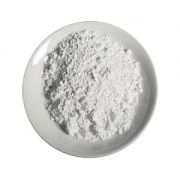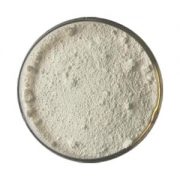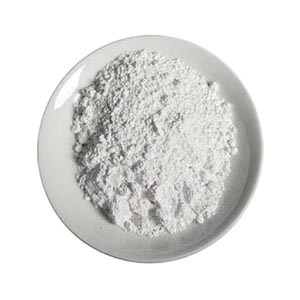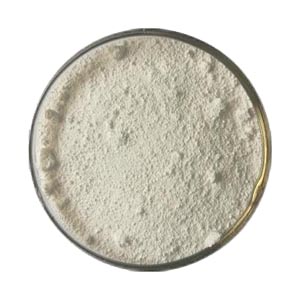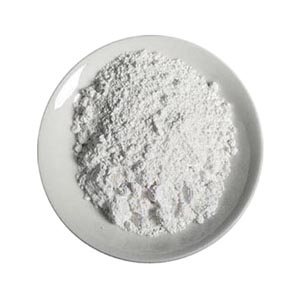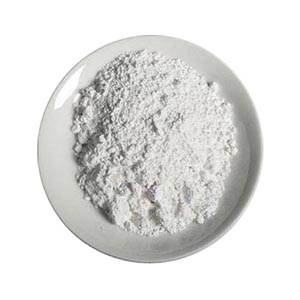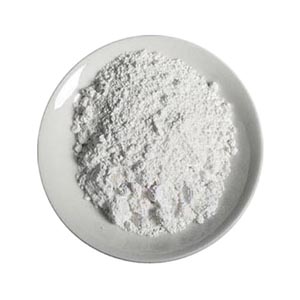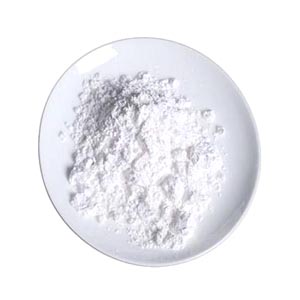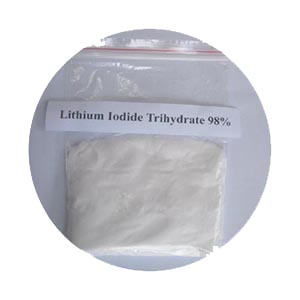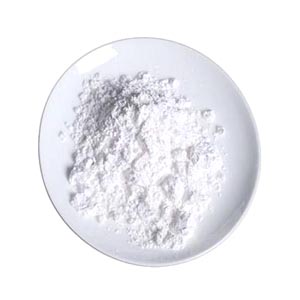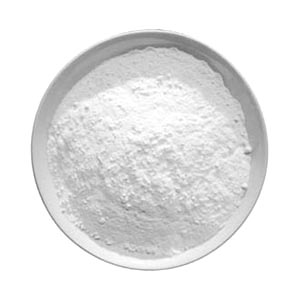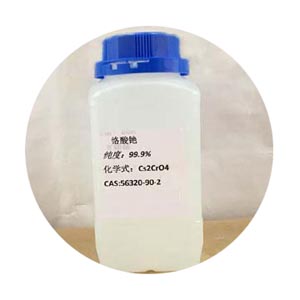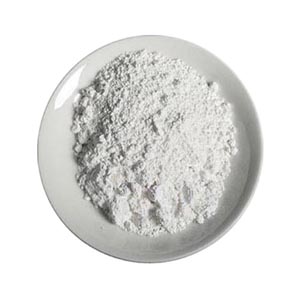
Sodium hexafluoroantimonate
Other name: Sodium hexafluoroantimonate(V); ; 1,4-dibromo-2-chloro-1,1-difluorobutane; sodium antimony hexafluoride; sodium hexafluoroantimonate(1-)
CAS Number: 16925-25-0
EINECS number: 240-989-8
Molecular formula: F6NaSb
Molecular weight: 258.7402
- 描述
- Related Info.
- Inquiry
Purity: ≥99.0%
Moisture: ≤1.0%
Color: White crystalline powder
Solubility: Soluble in water and organic polar solvents, such as ethanol, acetone and acetonitrile etc.
Sodium hexafluoroantimonate (NaSbF6), a deep processing of antimony fine chemicals, it is widely used in organic synthesis, photochemical reactions in the catalyst, high-grade glass additives; high-grade light-cured coatings and ink additives, pharmaceutical intermediates Body, material intermediates and so on. Especially in organic synthesis, it is often used as a substitute for organic fluoride, is used from pharmaceutical chemistry to materials science and other scientific fields, which are derived from pentavalent antimony and fluoride ions to form a very strong coordination bond , So that the fluorine is in a very stable state.
Sodium hexafluoroantimonate is an indispensable additive for photocurable coatings. The prospects for photocurable coatings are very promising. It is a fast-growing “green” new technology. From the 1970s to the present, radiation curing technology in developed countries Application is becoming more and more popular. Compared with the traditional coating curing technology, radiation curing with energy-saving pollution-free, efficient, suitable for thermal substrate, excellent performance, the use of equipment investment and so on.
At present, in China, light curing technology as a “new technology for the green industry in the 21st century”, in many sectors of the national economy more and more widely used in paper, wood, plastic, metal, optical fiber and other substrates Very good application, the growth rate is amazing.
Sodium hexafluoroantimonate can also be used as an alternative to the application of organic fluoride in medicine. It has some unusual and even very special physical and chemical properties because fluorine atoms, although similar in size to hydrogen atoms, Electronegativity, the introduction of fluorine does not make the molecules appear obvious three-dimensional configuration changes, but the molecular nature of the material to produce a great change, can be used for a variety of drug conversion, increase bioavailability. The pentadic antimony and fluoride ion strong pairing key, so that it is very stable, have a certain biological inertia, do not participate in any biological conversion, resulting in its use as a pharmaceutical intermediates without any impact on the organism.
Use and preservation of photoelectric materials (NaSbF6)
Sodium hexafluoroantimonate is an indispensable additive for photocurable coatings. Prospects for photocurable coatings are very promising. It is a rapidly developing "green" new technology. Since the 1970s, radiation curing technology has been used in developed countries. Applications are becoming more and more popular. Compared with the traditional coating curing technology, radiation curing has the advantages of energy-saving, pollution-free, high-efficiency, suitable for heat-sensitive substrates, excellent performance, and low investment in equipment.
At present, in China, as a "new technology for the 21st century green industry," the light curing technology has been applied more and more widely in many sectors of the national economy. It has been obtained on substrates such as paper, wood, plastic, metal, and optical fiber. Very good application, amazing growth rate.
Sodium hexafluoroantimonate can also be used as an alternative to the use of organic fluorides in medicine. It has some unusual or even very specific physicochemical properties. This is due to the fact that fluorine atoms, although similar in size to hydrogen atoms, have a great deal of Electronegativity, the introduction of fluorine will not make the molecule undergo a significant three-dimensional configuration changes, but the electronic properties of the molecules have greatly changed, can be used for a variety of drug conversion, increase bioavailability. The strong pairing of pentavalent antimony and fluoride ion makes it very stable, has a certain degree of biological inertia, and does not participate in any biological conversion, resulting in it being able to be used as a pharmaceutical intermediate without any impact on living organisms.
The purity of sodium hexafluoroantimonate is a key issue for the synthesis of optoelectronic composites. Our factory strictly implements a quality control system to ensure that each batch of products has uniform and stable performance. After the product is opened, the bag should be sealed immediately and stored in a suitable temperature and humidity environment. If it is exposed to air for a long time, it will cause “causticization” of the product to form impurities such as sodium carbonate, affecting the performance and use of the product. Degassing seal preservation is important for long-term use of the product.
相关产品
-
dipotassium trioxotellurate powder
Other name: Potassium tellurate(IV); POTASSIUM TELLURITE; dipotassiumtrioxotellurate; telluricacid(h2teo3),dipotassiumsalt; Tellurousacid,dipotassiumsalt; dipotassium tellurite.
CAS number: 7790-58-1
EINECS number: 232-213-1
Molecular formula: K2O4Te
Molecular weight: 269.7942
Density (g / mL, 25 ° C): 3.503
Melting point (oC): 460-470
-
Sodium bismuth titanate
Molecular composition:
Na0.5Bi4.5Ti4O15 or Na0.5Bi(4.5-x)Ce(x)Ti4O15Bismuth sodium titanate (BNT) is A-site complex ion perovskite ferroelectric. At room temperature, it belongs to the tripartite crystal system, and the Curie temperature is 320℃. It has excellent characteristics such as strong ferroelectricity, small piezoelectric constant and dielectric constant, good acoustic performance, and low sintering, and is considered to be the most attractive lead-free piezoelectric ceramic material.
-
Lithium acetate dihydrate
Name: Lithium acetate dihydrate
Alias: Acetic acid, lithium salt, dihydrate
CAS Number: 6108-17-4
EINECS number: 208-914-3
Molecular formula: C2H7LiO4
Molecular weight: 102.0156
Melting point: 56-58 ° C
Boiling point: 117.1 ° C at 760 mmHg
Flash point: 40 ° C
Water solubility: 29 g / 100 mL (20 ° C)
Steam pressure: 13.9mmHg at 25 ° C -
Rubidium fluoride
Other name: Rubidium monofluoride
CAS no. : 13446-74-7
EINECS no. : 236-603-2
Molecular formula: FRb
Molecular weight: 104.4662
Melting point (℃) : 775.
The boiling point (℃) : 1410.
Relative density (water =1) : 3.56.
The saturation vapor pressure (kPa) : 0.13 (920 ℃).
Solubility: soluble in water, insoluble in ethanol, ether, liquid ammonia, soluble in hydrofluoric acid.
-
Rubidium hydroxide
CAS no. : 1310-82-3
EINECS no. : 215-186-0
Molecular formula: HORb
Molecular weight: 102.4751
Boiling point: 100 °C at 760 mmHg
Solubility in water, soluble
Vapor pressure: 24.5 mmHg at 25 °C
-
Cesium carbonate
Other name: Cesium carbonate anhydrous; caesium carbonate
CAS no. : 534-17-8
EINECS no. : 208-591-9
Molecular formula: Cs2CO3
Molecular weight: 325.82
Density: 4.072
Melting point: 610 ℃ (dec)
Solubility in water: 261 g / 100 mL (20 ℃)
-
Lithium Iodide Trihydrate
CAS no. : 7790-22-9
Molecular formula: H6ILiO3
Molecular weight: 187.8913
Melting point: 73 ℃
-
Cesium iodide
Other name: caesium iodide
CAS no. : 7789-17-5
EINECS no. : 232-145-2
Molecular formula: CsI
Molecular weight: 259.8099
Melting point: 626 ℃
Boiling point: 127 ° C at 760 mmHg
Solubility in water: 74 g / 100 mL (20 ℃)
Vapor pressure: 13.8 mmHg at 25 ° C
-
Aluminum lithium tetrachloride
Other name: Lithium Aluminum Tetrachloride; Lithium tetrachloroaluminate; lithium tetrachloroaluminum; Lithium chloroaluminate (6CI); Aluminum lithium chloride (AlLiCl4)
CAS no. : 14024-11-4
EINECS no. : 237-850-9
Formula: LiAlCl4
Molecular weight: 175.7345
Chemical properties: Water or moisture absorption decomposition
Appearance: White or off-white powder
-
Cesium chromate powder
Other name: Dicaesium dioxido(dioxo)chromium
CAS no. : 56320-90-2
EINECS no. : 236-640-4
Molecular formula: CrCs2O4
Molecular weight: 381.8046
Density: 4.237 g/mL

